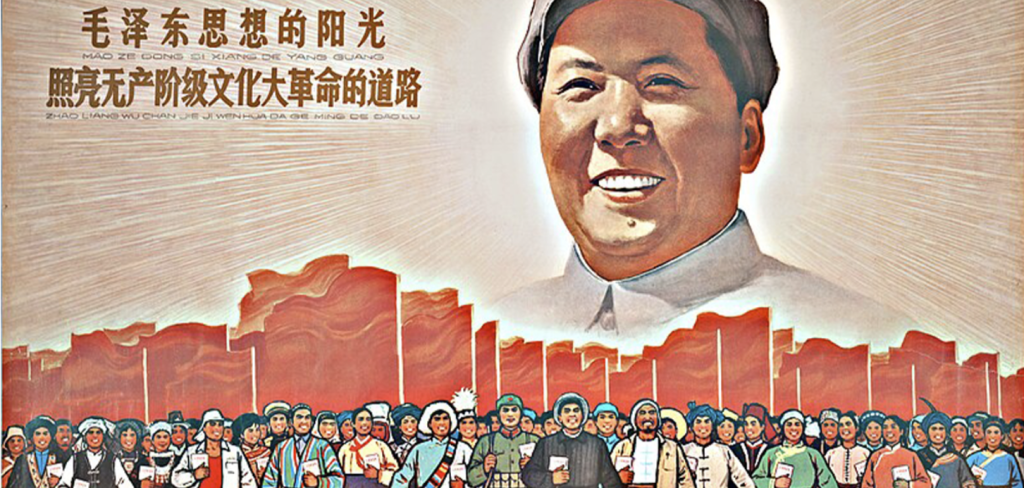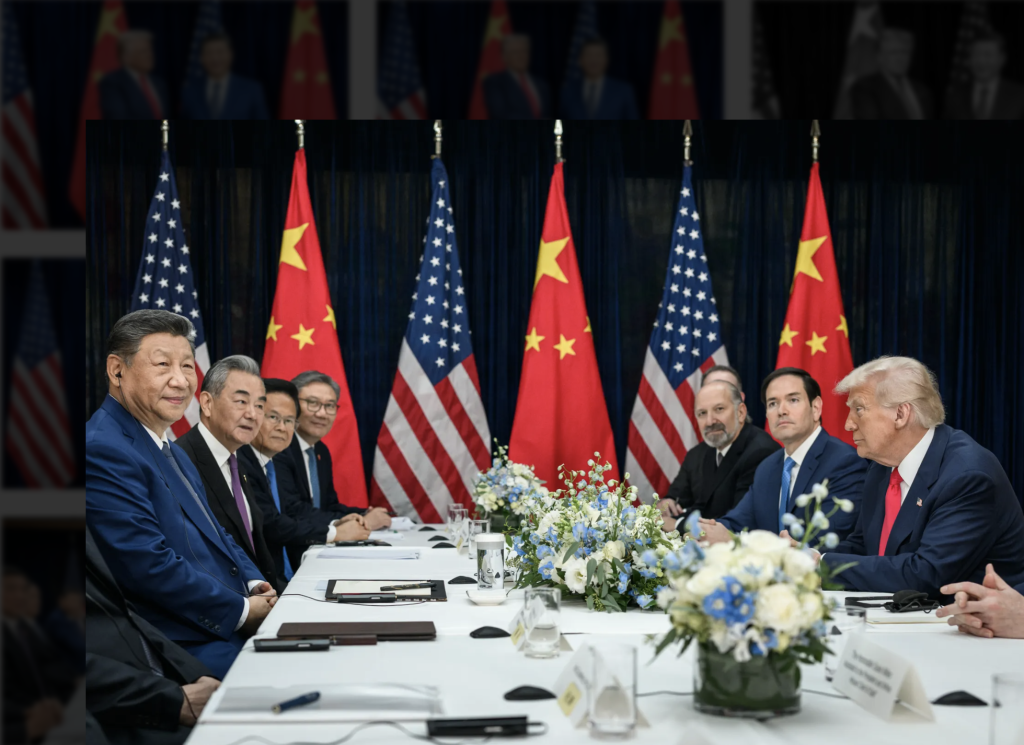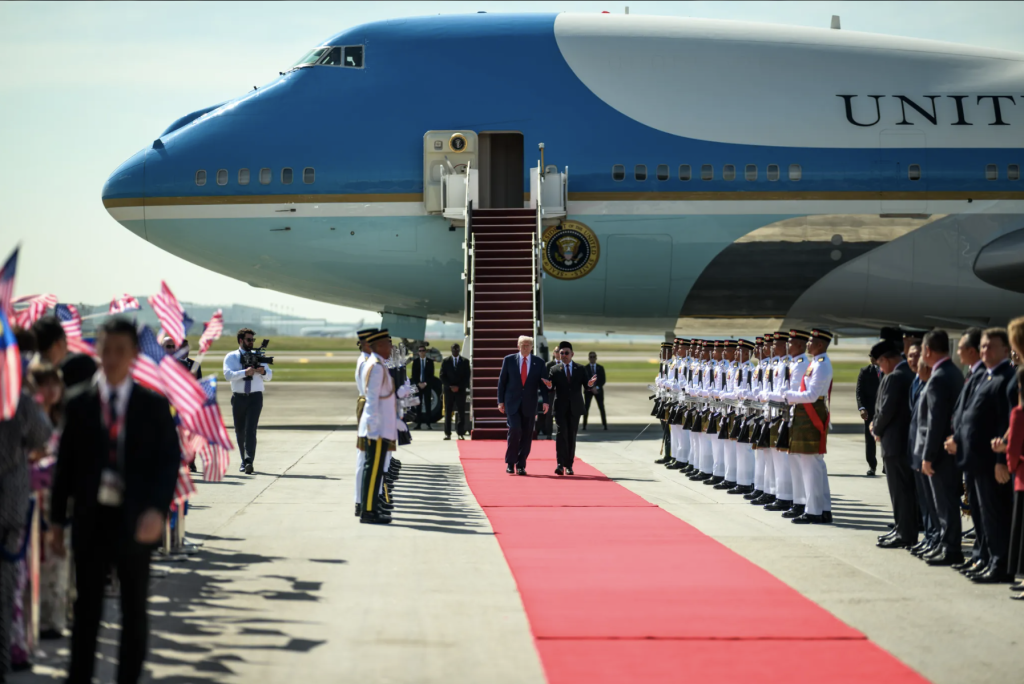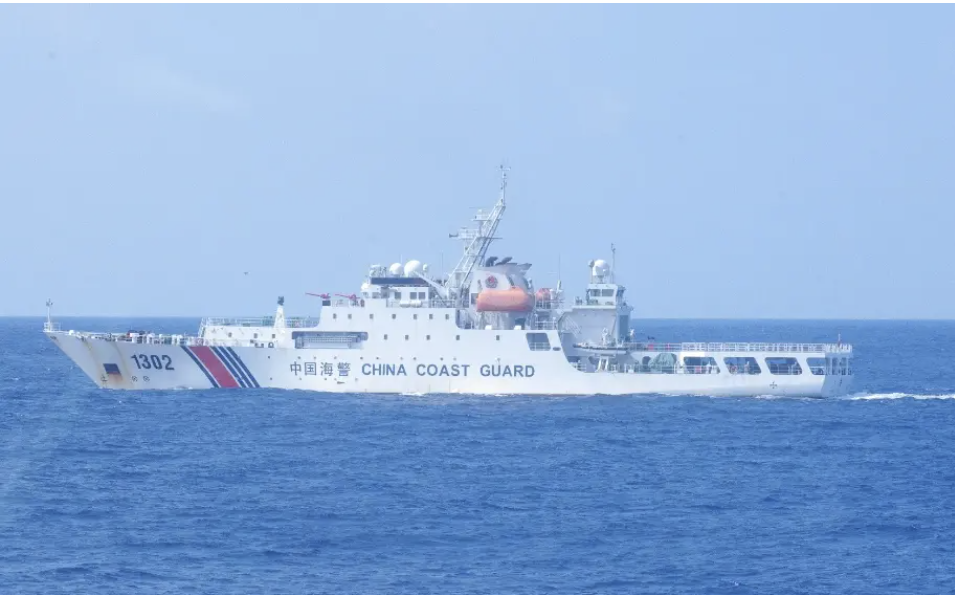Exclusive: “One Belt, One Road” and China’s International Relations
China Program Policy Paper 1(2), The Carter Center
Dalton Lin
September 2015
Summary
China’s “One Belt, One Road (OBOR)” project is dubbed as the country’s long-term national grand plan for the coming two to three decades. The project is composed of two parts: a “Silk Road Economic Belt” that spans the Eurasia landmass, and a “Maritime Silk Road of the 21st Century” that leaves China’s shores and passes the Indian Ocean, the Suez Canal, and the Mediterranean Sea to reach Europe, as illustrated in the following figure. It is noteworthy that China so far has never pinned down the exact routes for either the belt or the road.
The OBOR project’s initial design is to link China with its periphery through transportation infrastructures to facilitate economic, monetary, political and social exchanges. The ultimate goal is to extend its geographical bounds to form a cross-Eurasia economic community where goods, money, and people flow freely across borders. In the process, through the Chinese government’s policy guidance (primarily through the Silk Road Fund’s initial capital injection and the Asian Infrastructure Investment Bank’s (AIIB) financing to reduce Chinese businesses’ investment risk), the OBOR project hopes to effectively lead China’s surplus capital and industrial overcapacity into the infrastructure and industrial investments in countries along the OBOR project’s routes. The purpose is to facilitate China’s domestic economic upgrading (by releasing resources from industries with overcapacity and channeling them to emerging ones) and realize the transformation toward an economy that has an equal footing on “bringing in [foreign capital and know-hows]” and “[domestic excess capital and overcapacity] going out”.

Source: Image from Roman Wilhelm/ MERICS, cited from The Diplomat http://thediplomat.com/2015/09/chinas-silk-road-initiative-is-at-risk-of-failure/
The timing and objectives of China’s OBOR project are similar to Japan’s past experience of turning to outward investment to deal with excess industrial capacity and foreign exchange reserve accumulated through a long period of astonishing economic growth. The difference is that Japan chose to achieve these goals within the extant U.S.-led international system of governance. Such a course of action had the advantage of abating other countries’ suspicion of Japan’s intentions and reducing their incentives to obstruct Japan’s efforts. However, it subjected Japan to the U.S. pressure, and consequently, Tokyo was forced to sign in 1985 the Plaza Accord and sharply appreciated the Japanese yen, which eventually contributed to Japan’s asset bubble and trapped the country in a “lost decade.”
In contrast, China has chosen to pursue the goals outside the existing international governance system and create its own structure. It thus bears greater risk and faces more obstacles than Japan did. Beijing wants to channel its capital and industrial capacity through a new framework of international governance, composed of China-centered networks of international trade (based on existing and future Free Trade Agreements (FTAs)), new international development financing institutions (the AIIB, Silk Road Fund, BRICS New Development Bank, the Shanghai Cooperation Organization (SCO) financing institutions, etc.), an internationalized Renminbi (RMB, the Chinese currency) that plays the role as a major global payment currency, and new land and maritime infrastructures that connect the Eurasian landmass (providing the public goods in the new system). This means China must face various high risks associated with untested new international structures: the political risk in coordinating policies with foreign governments along the OBOR’s routes, the economic risk in securing returns from investment and financing conducted through new international development agencies, and the security risk in protecting infrastructure projects in foreign regions of extreme instability. In addition, since money often buys influence, China has to face suspicions of other countries about its political intention and the obstruction of the United States and Russia aiming at thwarting China’s inroads into their traditional geopolitical turfs. China faces steep challenges in the initial stages of its outward-bound efforts, but were the OBOR project to be successful, it will be much more difficult for the United States to constrain China’s growing influence.
Put it another way, even if China’s OBOR project might not start with the objective of constructing a new international order, its advance might very well result in one. The embryonic shape of this new order is structured and develops along four pillars. First is a China-centered international economic integration architecture that includes China’s numerous extant and planned bilateral and multilateral FTAs, such as an upgraded version of the China-Pakistan FTA and the Regional Comprehensive Economic Partnership (RCEP). The second is a China-led international development financing mechanism, such as the AIIB and the Silk Road Fund. The third is an international monetary system where the RMB plays the role of a primary reserve and trading currency. China has concluded bilateral currency swap agreements with various countries and expanded the global network of RMB clearing banks to promote the use of RMB in cross-border trade and investment. The aim is to first regionalize and ultimately internationalize the use of the Chinese currency. The fourth is a China-led common security system. China has not yet explicitly made security arrangements a part of its OBOR designs. However, in view of the complex security environments that the OBOR faces in various countries and regions, a security coordination mechanism with participating countries is inevitable. The reason is that only with assured security could China pursue reasonable returns on the OBOR’s infrastructure investments, which are critical to establish the OBOR project’s credibility (both domestically and internationally) and attract sustained engagement of other parties. The implicit security aspect of the OBOR project has been revealed in Chinese leaders’ talks at the SCO and the Association of Southeast Asian Nations (ASEAN) summits, where they have brought up proposals of closer security cooperation. Possible bases for a China-led common security system include the SCO Regional Anti-Terrorist Structure (RATS), China-ASEAN Defense Ministers’ Special Meetings, the Conference on Interaction and Confidence-building Measures in Asia (CICA), etc.
To build up the abovementioned four pillars in countries along the OBOR’s planned routes, China needs to promote economic and trade integration, development cooperation, policy communication (this is particularly related to development cooperation), monetary integration, and security cooperation with these host countries. Therefore, using these five aspects as dimensions, we can explore the OBOR project’s prospects in specific countries or regions—the strengths, weaknesses, opportunities and threats that each country’s or region’s internal and external circumstances bring to bear on China—and analyze how the project will impact China’s relations with the countries and regions on the OBOR’s routes.
As mentioned already, because of its expansive geographical coverage (across the whole Eurasia landmass) and massive investment envisaged, the OBOR project involves significant economic, political and security risks. The success and failure of the project will thus depend on whether China can effectively manage these risks. Viewing from such consideration, countries that have existing bilateral or multilateral cooperative mechanisms with China, as well as those locate in the proximity to the Chinese mainland and thus within China’s power projection diameter are likely to constitute the pilot zones of the OBOR project and be critical to the fate of the enterprise. The reason is straightforward—the existing mechanisms and short distance between these countries/regions and China make it relatively easier to coordinate policies and manage risks in these places. If we categorize the OBOR project’s potential participating countries/regions by these two dimensions, as shown in the following table, Kazakhstan, Kyrgyzstan, Tajikistan, Uzbekistan (the four Central Asian members of the SCO), Pakistan, and the ten ASEAN members stand out as likely key nodes in the early implementation of the OBOR project and serve as critical windows of observation for its progress. Correspondingly, since Xinjiang is adjacent to Central and South Asia, and Yunnan and Guangxi are adjacent to Southeast Asia, these three provinces are the focal points for observing the OBOR project’s progress within China.

The ASEAN is the first hub that the Maritime Silk Road of the 21st Century hits when its route departs China’s shores. China’s current cooperative mechanisms with the ASEAN provide a good basis for promoting the OBOR project substantively and substantially in the region. The ASEAN is China’s third largest trade partner, with a bilateral trade volume of 480.3 billion U.S. dollars in 2014, and the two sides are negotiating to upgrade their extant China-ASEAN Free Trade Area. In addition, all the ASEAN countries have signed on for the founding of the China-led AIIB, and China has inked bilateral currency swap agreements with Singapore, Malaysia, Thailand, and Indonesia and has established RMB clearing banks in Kuala Lumpur, Bangkok, and Singapore. In other words, the ASEAN has been relatively receptive to deepening their economic relations with China, accepting Beijing’s development assistance, and receiving and using the Chinese currency. These China-ASEAN cooperative mechanisms have paved the way for Beijing to promote the OBOR project in the ASEAN and further China’s integration with these countries.
However, the OBOR project’s success in Southeast Asia might turn out to critically depend on something not related to the project’s own risks: whether China can effectively defuse the tension with ASEAN countries that arises from their South China Sea disputes. The disputes have strained bilateral relations since 2010. Chinese Foreign Minister Wang Yi on August 9, 2014, proposed to solve the South China Sea issues through a “dual-track approach,” which was seconded by Chinese Premier Li Keqiang in that November in the Ninth East Asia Summit. According to the approach, China asserted that the disputes in the South China Sea should be addressed by countries that are directly concerned through friendly consultations and negotiations and in a peaceful way, and peace and stability in the South China Sea could be jointly maintained by China and ASEAN countries. Many Chinese commentators have pointed to the second part of the dual-track approach as the first evidence that China had made partial concessions to the ASEAN’s request of solving the South China Sea disputes through multilateral avenues. However, the rhetoric has so far failed to quell ASEAN’s misgivings about China’s intention. To really calm the tension and win the ASEAN’s unreserved embrace of the OBOR project, it can be expected that the successful negotiation and conclusion of a binding ” South China Sea Code of Conduct” is a prerequisite. However, before the final signing of the code, China (and to a lesser extent individual ASEAN claimants) will certainly take actions to strengthen its presence in the South China Sea and bolster its effective control in the area to accrue bargaining chips for the negotiation. How Beijing manages the tension and negative impacts on China-ASEAN mutual trust that result from such consolidating efforts will challenge the near-term implementation of the OBOR in Southeast Asia. If China fails on this respect, the OBOR project will fail in a region where it arguably can make the most effective and far-reaching contribution to the emergence of a China-led international order.
Circumstances in Central Asia are in stark contrast to those in the ASEAN. China has no history of serious armed conflicts with contemporary Central Asian states. The implementation of the OBOR project in Central Asia further enjoys the advantage of a common political understanding between China and Central Asian countries that is based on, above all, a commitment to a multipolar international system and the principle of respecting individual country’s choice of domestic political systems. Moreover, The Shanghai Cooperation Organization has been up and running for a long time, providing a ready-made framework for cooperation between China and its Central Asian members that could be harnessed to promote the OBOR. However it must be admitted that the focus of cooperation in the SCO has been predominantly on security issues (i.e., anti-terrorism), while economic cooperation among member countries has made very limited progress in the past. China’s economic interests in Central Asia are not significant—the volume of bilateral trade is low (25 billion U.S. dollars in 2014), and Central Asian states are lukewarm at best about receiving and using RMB in their international payments.
Since Russia has always regarded Central Asia as its own backyard, the OBOR project’s progress in Central Asia, including trade and economic integration and security cooperation, also very much depends on how much Russia will allow the coordination to be institutionalized between the Russia-led Eurasia Economic Union (EEU) and Collective Security Treaty Organization (CSTO), the OBOR project, and the SCO security framework. To China’s fortune, Russia’s relations with the West have deteriorated sharply in the wake of the crises in Ukraine since 2013, and to avoid total international isolation, Russia has inclined to maintain cordial relations with China. Meanwhile, China has taken several important confidence-building measures with Russia, such as recognizing the EEU’s status, function, and significance as an international entity and declaring that China will respect Russia’s interests in Central Asia as Beijing pushes for the OBOR project in the region. China has also held a number of large-scale joint military exercises with Russia, giving both sides good opportunities to carry out joint military planning and operations. These measures help China demonstrate its self-restraint on the use of its power and reduce Russia’s suspicions about China’s intentions, increasing the likelihood of winning Russia’s support of the OBOR. Nonetheless, if China places the OBOR’s first priority on pushing economic integration and transportation interconnectability in Central Asia through the SCO, it may reflect two things. For one, it may reflect the fact that the OBOR faces less resistance and thus is less costly to carry out in Central Asia and Russia. For the other, it might reflect the OBOR project’s instrumental nature: instead of being a project for economic benefits as pitched by the Chinese government, its main purpose is to serve China’s strategic interests—circumventing the pressure from the United States and its allies on the east coast and protecting China’s energy security—given the meager economic interests China has in the region.
The OBOR project faces circumstances in Pakistan that are similar to these in Central Asia: favorable political environment but scant economic benefits. China has in general enjoyed good political and military relations with Pakistan ever since the two countries established diplomatic recognition. Pakistan recently even incorporated the OBOR project’s major plan in South Asia—the China-Pakistan Economic Corridor—into its own “Vision 2025” plan, an outcome that can serve as a model of China’s pushing for policy communication with countries along the OBOR’s routes. China and Pakistan in particular enjoy a unique niche in developmental cooperation. Pakistan’s economic growth has been hindered by the nation’s poor infrastructure and shortage of electricity, and Islamabad is very open to receive Chinese capital and technical support to meet these needs. In other words, Pakistan provides a good outlet for exporting China’s surplus capital and industrial overcapacity. It was thus not surprising that the Silk Road Fund’s first case of capital investment is settled in Pakistan’s Karot dam in 2015.
However, except in the area of contract construction, the economic structures of China and Pakistan lack complementarity. Bilateral trade’s volume is small (16 billion U.S. dollars in 2014, which was a third of the Philippines’ trade with China and a fifth of Vietnam’s) and structure is extremely imbalanced—China has enjoyed huge and expanding trade surplus with Pakistan, while Pakistan’s largest export market has always been the United States. The anemic economic interests provide scant internal impetus to the Sino-Pakistani relationship and inevitably make outstanding the geostrategic aspect of their bilateral amity in general and the OBOR’s design in Pakistan in specific. For instance, the Gwadar Port in Balochistan province of Pakistan, which is the prioritized project in the China-Pakistan Economic Corridor, makes weak economic sense and thus unavoidably courts India’s suspicion about Chinese intention and New Delhi’s obstruction to the OBOR’s progress in South Asia. In order to alleviate India’s skepticism, China will have to strengthen the economic leg of the Sino-Pakistani relations by carrying out its plans of establishing free trade areas along the economic corridor. China also should look for ways to have both India and Pakistan participate in the OBOR project’s planned transportation routes that will connect South Asia, Central Asia, and China. This will of course require improvement in the India-Pakistan relations; but a stable India-Pakistan relationship will be conducive to the OBOR project’s general progress in South Asia and thus serves China’s national interests. In addition, reconciliation between Pakistan and India will also facilitate the improving of the Sino-Indian relations.
The OBOR project faces the biggest challenges in Pakistan on the security front. Even though Sino-Pakistani political and military relations have always been close, but at a time when the relationship between Pakistan’s government and domestic armed groups has deteriorated, such close official relations between Beijing and Islamabad have become somewhat a liability—domestic armed groups have turned to attack Chinese assets to put pressure on the Pakistani government. In addition, the Pakistani military’s inability to clean up the small number of East Turkestan Islamic Movement (ETIM) activists hiding in Pakistan’s Federally Administrated Tribal Areas (FATA) has also led China to suspect that the middle and low ranks in the Pakistani military have become “extremized (i.e. sympathetic to Islamic extremism),” casting a shadow over bilateral security cooperation. To make things more complicated, the security issues within Pakistan, and by implication in western China, cannot be disentangled from the security situations in Afghanistan. Therefore, after it was clear that U.S. troops would gradually withdraw from Afghanistan from 2014 to 2016, China has increased its involvement in the Afghan issue, lest in the aftermath of the U.S. withdrawal, Afghanistan would become a paradise for religious extremism, terrorism, and separatism in Xinjiang, and a breeding ground for transnational crime. China so far has hosted leaders of the Afghan Taliban in Beijing and brought Pakistan on board to facilitate negotiations between the Afghan government and the Taliban group.
Viewing from the security concerns arising from Afghanistan’s near failed-state situation, China and the United States in fact share significant common interests in stabilizing the country. In other words, Afghanistan provides a strategic opportunity for Sino-US cooperation. Washington’s decision to stay out of the AIIB and to discourage its allies from participating has laid bare its suspicion of China’s OBOR project. Indeed, the international order that China currently is seeking to architect does not seem to have much compatibility with the existing U.S.-led international system (viewing from the fact that Beijing’s and Washington’s many recent initiatives, such as the RCEP versus the Trans Pacific Partnership, have explicitly or implicitly exclude the other). Such competitive postures have led many to worry that the two systems will eventually be on a collusion course. However, even if Beijing could successfully build up a China-centered international order through the OBOR, the future between this China-centric system and the existing U.S.-led one has not yet become inevitably confrontational, and much still depends on their present interactions. China and the United States therefore will be wise to grasp the rare cooperative opportunities presented by their common interests in stabilizing Afghanistan. For China, it is an opportunity to demonstrate that Beijing does not intend to expel the United States out of China’s neighboring regions and establish an exclusive sphere of influence; for the United States, it is a chance to validate Washington’s boasted claim that the United States is willing to see China play a bigger, even leading, role in regional and international affairs. In other words, through actual Sino-U.S. cooperation, Beijing has a better chance to not only achieve the OBOR project’s goal of stabilizing China’s relations with its periphery but also direct the Sino-U.S. relationship toward a track of constructive interactions.
In sum, the advance of the OBOR project could trigger a transition of the international system that moves the current U.S.-dominant order to a multipolar, or even China-centric, one. However, in addition to the OBOR project’s prospects in the above-discussed key areas, whether or not this transition could materialize depends on many uncertain factors. First, to avoid zero-sum competition that might lead to boycott from a coalition of status-quo states, China must keep its international system inclusive and open to all countries, in particular to the United States. However, Beijing faces a dilemma here—it is not without doubt that China can maintain its desired predominance in the system in the case of U.S. participation, and if it cannot, the whole endeavors defeat the purpose of altering the current U.S.-led order. Second, China is not a democracy, and because non-democratic countries lack the domestic political mechanisms that can embed international commitments into domestic institution and insolate them from individual leaders’ whim, the risk is not completely absent in contemporary China that the OBOR project might be gone with Xi Jinping’s departure from the office. Any doubt about the OBOR project’s longevity beyond Xi’s reign is likely to undermine the credibility of not only the project but also the envisaged China-centric world. Last, a new international order is more likely to attract willing participants and easier to sustain when it provides predictability of and constraint on the use of power by the dominant country. However, China’s current behavior in the South China Sea certainly does not dispel people’s worries about a “might makes right” world under China’s leadership. In other words, the embryonic China-led international order has not yet shown any signs of credible constraint on China’s power, and this lack of check on the arbitrary use of its predominant strength undermines not only China’s relations with its periphery but also the broader international community’s acceptance of a China-centric system.
Finally, how should we judge the success or failure of the OBOR project? Because China has deliberately left ambiguous the duration and scope of the OBOR project and emphasized that it won’t pursue uniform progress across-the-board in every individual country and region, Beijing has great latitude to continue or terminate the project and declare its triumph. However, China’s original motives for initiating the OBOR project—to establish a China-centric trade, investment, and financial architecture to enable China to rid itself of the shackles of the U.S.-led dollar-centered international framework, smooth the way for exporting China’s surplus capital and industrial overcapacity, and thus promote the Chinese economy’s upgrade and continued development—provide outside observers with objective benchmarks to gauge the project’s achievements. Therefore, by 2022, that is, upon the end of Xi Jinping’s ten-year term of office,
-If China could complete or upgrade its network of FTAs with the ASEAN, Central Asia, and South Asia and gain considerable freedom of capital movement and protection of Chinese investment in these areas;
-If the AIIB could successfully operate and earn credit ratings parallel to these of the World Bank or the like and, together with the Silk Road Fund, become secure channels of managing China’s excess foreign exchange reserve and reducing its reliance on dollar assets;
-If the RMB could play a similar role to the U.S. dollar in settling the international payment in China’s trade and investment with Southeast Asia, South Asia, and Central Asia;
-If the Chinese inland provinces, especially Xinjiang, Yunnan, and Guangxi, could see their trade and investment relations with neighboring countries grow and the gap between their per capita GDP and that of coastal provinces narrow;
-If the Chinese industry could successfully export its overcapacity and move up in the value chain of the global production network;
-If China could make progress in establishing exploratory bilateral or multilateral security cooperation mechanisms in the ASEAN, South Asia, and Central Asia;
then China can legitimately declare that the OBOR project has successfully accomplished its near-term tasks.
BY DALTON LIN, Research Associate, China and the World Program, Princeton University.
For access to the full report (in Chinese), see: here.








